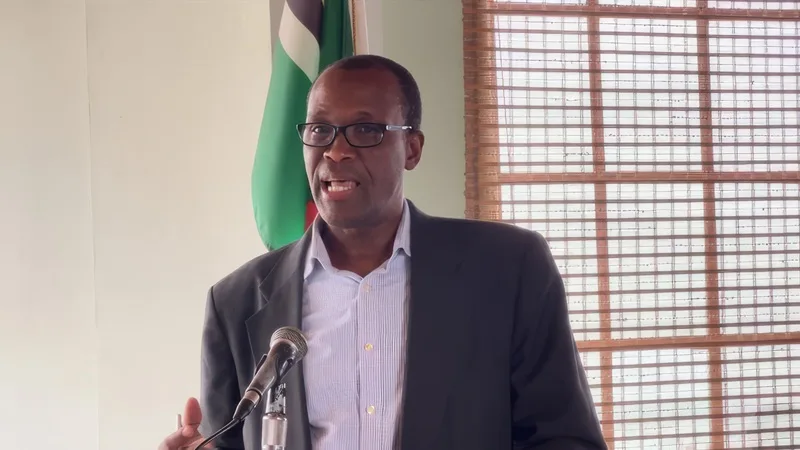National Disaster Plan of Dominica

Dominica’s National Disaster Plan, first drafted in 1987 and substantially updated in 2001, serves as the legal and operational core of the country’s disaster management framework. Grounded in the Disaster Preparedness and Emergency Powers Act of 1987, it outlines a comprehensive lifecycle approach, spanning preparedness and mitigation through response and recovery, ensuring coordinated action across government ministries, community groups, and international partners. Designed for a nation highly exposed to hurricanes, flooding, and landslides, the Plan emphasizes rapid decision-making, clear leadership protocols, and community-based resilience.
Institutional Structure and Legal Mandates
The Plan designates the National Emergency Planning Organisation (NEPO) as the primary decision-making body during emergencies, chaired by the Prime Minister to ensure high-level attention and oversight. NEPO oversees multiple specialised committees, spanning response, recovery, logistics, and public messaging, tasked with preparing and executing disaster strategies. Supporting NEPO operationally is the Office of Disaster Management (ODM), which manages early warning systems, emergency logistics, and coordination at the field level.
NEPO and ODM share mandated roles with critical partners, including the Ministry of Health, the Ministry of Public Works, and local councils. The Plan grants the President emergency powers under Section 14 of the Constitution, enabling legal actions such as ordering evacuations, enforcing curfews, requisitioning private property, and regulating communication and transportation systems. These measures are vital for mobilising national resilience but are also bound by legal and constitutional safeguards to prevent overreach.
Preparedness, Early Warning, and Community Mobilization
An effective disaster response begins long before any hazard strikes. The National Disaster Plan emphasizes preparedness through its:
- Emergency Operations Centres (EOCs): District-level hubs equipped for crisis coordination
- Community-Based Disaster Risk Management (CBDRM): Schools, village councils, and the Dominica Red Cross take part in hazard monitoring and evacuation drills
- Early Warning Systems (EWS): An integrated network of radio, satellite, and community alert systems ensures fast dissemination of critical information
The Plan also provides hazard-specific protocols, including flood response maps, landslide alert systems, shoreline evacuation routes, and contingency arrangements for schools and public institutions. These tools build resilience by preparing communities rather than leaving them reactive to disasters.
Emergency Response Procedures
Once a disaster is imminent or underway, NEPO activates the National Disaster Plan to coordinate emergency response across multiple fronts:
- First Response: The Plan prioritizes search-and-rescue operations, field medical care, temporary shelters, and distribution of food, water, and sanitation facilities
- Utility Restoration: The Ministries of Public Works, Energy, and Nationa Security collaborate to restore electricity, roads, bridges, and water systems
- Logistics and Security: The local police, IMF Assistance, armed forces, and volunteer teams secure affected zones, assist disabled individuals, and patrol essential routes to prevent disruptions
- Strategic Oversight: NEPO chairs coordination meetings, aligns activities with national priorities, and supervises data collection to inform medical, infrastructural, and social response
The Plan ensures that regional partners, such as the Caribbean Disaster Emergency Management Agency (CDEMA), and international donors, including the World Bank, IFRC, and GFDRR, are formally integrated into response mechanisms, facilitating external assistance through established protocols.
Recovery Framework and Risk Reduction Initiatives
After immediate needs are met, the Plan shifts focus to recovery and bolstering resilience:
- Damage Assessment and Reporting: Teams evaluate impact on housing, schools, hospitals, and transport, compiling data for national recovery appeals
- Building Back Better: Under the Climate Resilience and Recovery Plan 2020–2030, new infrastructure standards mandate hurricane-proof designs, elevated roads, and durable materials
- Long-Term Risk Management: The Plan integrates disaster risk reduction into land-use plans, watershed protection efforts, ecosystem restoration, and community education programs
- Institutional Learning: Post-disaster evaluations under the Plan guide updates to training, equipment, resource allocation, and legal amendments
These measures align with international frameworks like the Sendai Framework for Disaster Risk Reduction and benchmarks set by CDEMA, ensuring Dominica is not merely reactive to crises but primed for success.
Financial Readiness and Budgetary Tools
Fiscal preparedness is central to implementing the National Disaster Plan. It is closely tied to budgetary instruments such as the Contingencies Fund and Natural Disaster Contingency Fund, which are triggered to provide emergency financing for actions like shelter funding, temporary staff deployment, emergency communication, and cleanup operations. Domestic funding is complemented by credit options, such as the Catastrophe Deferred Drawdown Option (Cat-DDO), a World Bank instrument, ensuring multiple financial mechanisms support disaster operations.
The Plan emphasises integrated budgeting within the Public Sector Investment Programme (PSIP) to ensure pre-positioned readiness for reconstruction and mitigation efforts. Complementary external support, such as grants from the EU, GFDRR, and CDEMA, is mobilised through NEPO’s established channels.
Challenges and Path Toward Reform
While the Plan has proven its value, key challenges remain:
- Discretionary Triggers: Emergency activation criteria are loosely defined, leaving room for delays or inconsistency
- Resource Constraints: Funding caps in the Contingencies Fund may be insufficient during multi-hazard events
- Technological Gaps: The absence of fully integrated digital EOCs slows situational awareness and coordination
- Overlapping Authorities: NEPO, ODM, local councils, and ministries often share overlapping duties, leading to bureaucratic bottlenecks
- Delayed Legal Updates: The Comprehensive Disaster Management (CDM) Bill, intended to replace the 1987 disaster laws, has yet to be legislated
In response, the government is pursuing several reforms:
- Codifying emergency protocols and activation thresholds under the pending CDM Bill
- Strengthening EOCs with modern digital capacity and real-time data feeds
- Defining clearer roles for government agencies and aligning local government capacities
- Enhancing financial preparedness by expanding the natural disaster fund and improving budget realism
- Strengthening training through partnerships with organisations such as IFRC, GFDRR, and CDEMA
Vision for the Future
Dominica’s National Disaster Plan reflects an evolving philosophy: that disasters should be met with preparation, purpose, and learning. As the country rebuilds in the aftermath of Hurricane Maria and pursues climate-resilient development, the Plan plays a crucial role in integrating fiscal tools, community action, technical readiness, and legal mechanisms under a cohesive management system. The Plan articulates Dominica’s ambition to be not just a survivor of disasters, but a model of Caribbean resilience in governance, finance, social cohesion, and environmental responsibility.




